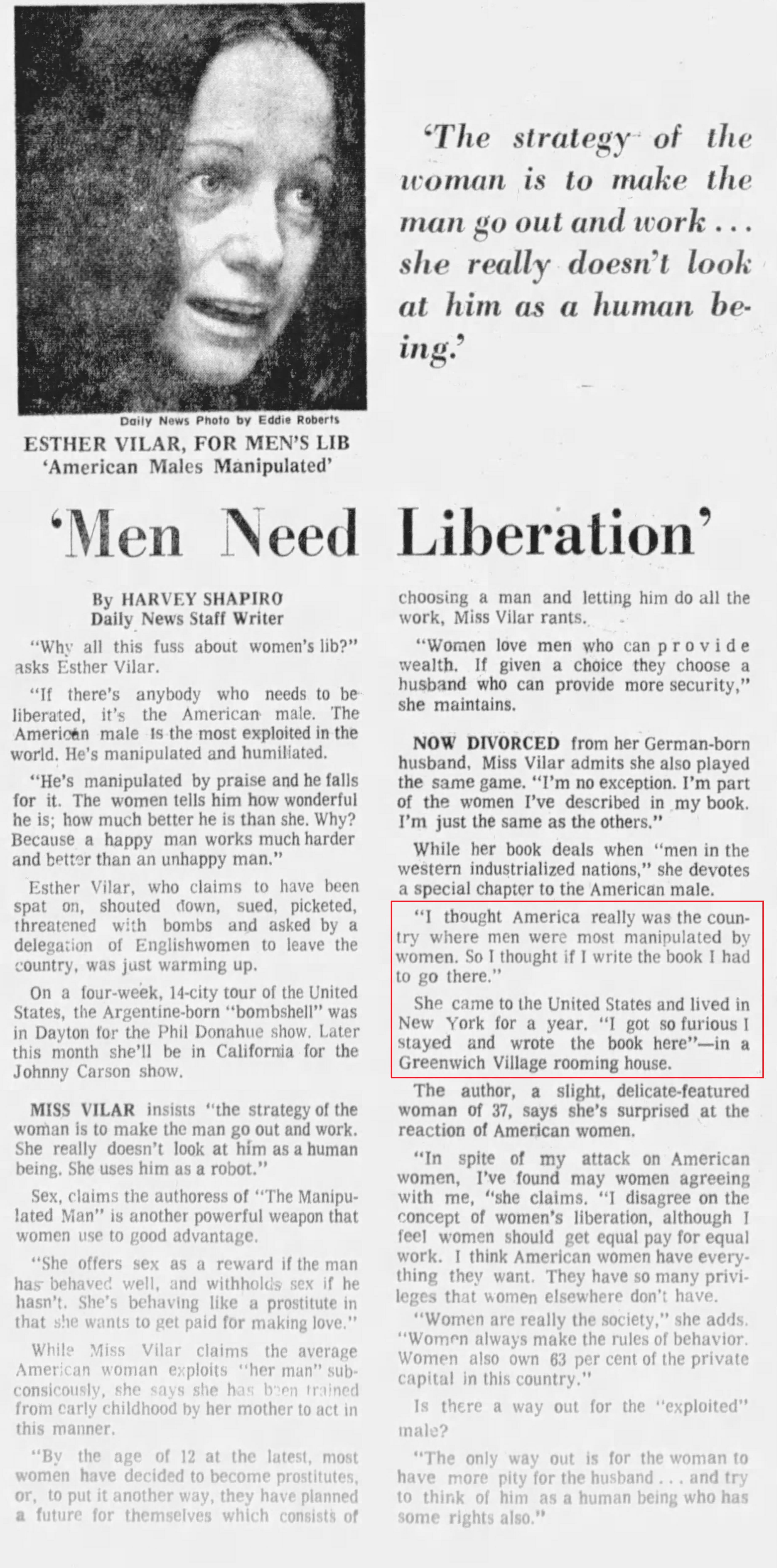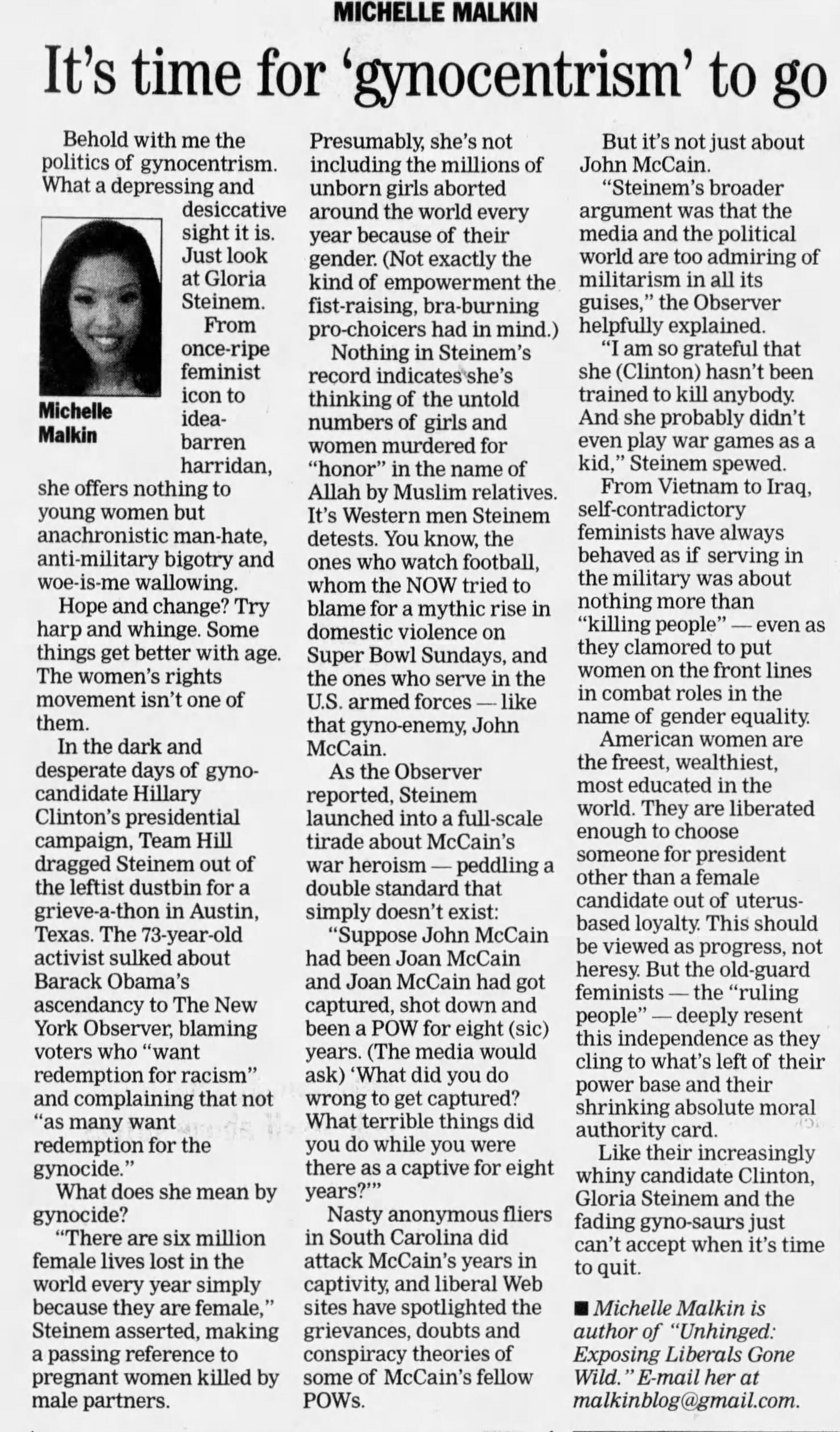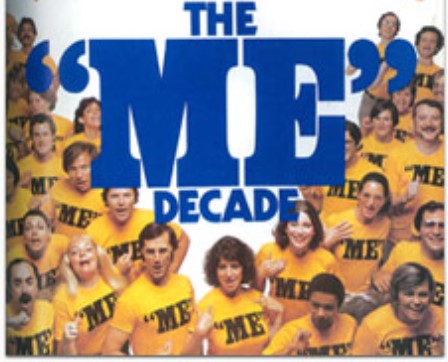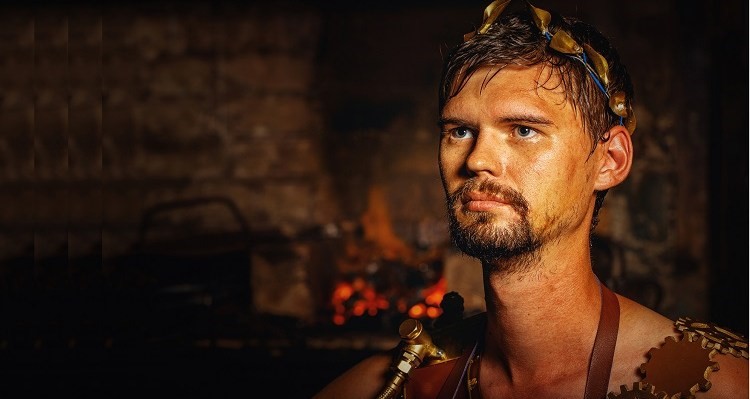
Source: Dayton Daily News Mon, Feb 5, 1973

Source: Dayton Daily News Mon, Feb 5, 1973
The following article appeared in the Nigerian publication Pulse.ng in 2017:
The term alpha male shouldn’t be strange to you. It has become a pop culture buzz word up to the point of overuse. The alpha male is the confident, strong male who is the leader of the pack. Things revolve around him and he leads the way for others.
The alpha males are known as the bad guys, assholes or even Yoruba demons.
The beta male is the next on the pecking order. He is the opposite of the alpha male in the pack. He lacks charisma, charm, physical presence and confidence.
The beta males are the nice guys that are normally friend zoned by hot babes.
Last on the list is the omega male. He is at the bottom of the pile. He is socially awkward and doesn’t look presentable. In other words, he is a slob. Nobody wants to hang out with these type of guys.
Apart from these types of men, there is a new classification of men- the zeta male.
The three types of men are based on largely how women perceive them and society expectations. The zeta male is a rebel and doesn’t give a damn about women and society.
A zeta male is used for men who have rejected the traditional expectations associated with being a man- a provider, defender, and protector. He rejects stereotypes and doesn’t conform to traditional beliefs. He marches to the beat of his own drum and refuses to be seduced and shamed by anyone.
The term zeta male first appeared on the Internet in 2010. The appearance of the zeta male in the hierarchy of men has a lot more to do with what is known as Men Going Their Own Way.
Abbreviated as (M.G.T.O.W), this is a movement of men who have detached themselves from societal standards and expectations of women. According to Urban Dictionary M.G.T.O.W “is a statement of self-ownership, where the modern man preserves and protects his own sovereignty above all else. It is the manifestation of one word: “No”. Ejecting silly preconceptions and cultural definitions of what a “man” is.”
While an alpha female might find feminism amusing, the zeta male hates it. Zeta is named after Zeta Persei, the third-brightest star in the constellation.
According to website A Voice For Men “Persei is a variation of Perseus, the first of the Greek mythological heroes.” In Greek mythology, Persei slew Medusa. Medusa happens to be the symbol for feminism.
Zeta male is the fourth dimension of men. It will be interesting to see how long the zeta male will last in this era of social constructs.
The excerpt below is from The Manipulated Man by Esther Vilar, available at Amazon.
THE EXPLOITATION OF THE AMERICAN MALE by the American female would be a purely American affair were it not a model for women all over the world. Unfortunately, the economic hegemony of the U.S.A. influences not just the politics, science, research, and culture of all other capitalist countries but, to a great extent, the social behavior of their populations. Through the mass media, which have been relentlessly perfected, this influence spreads to all areas of life more and more rapidly.
The old maxim about American consciousness becoming the consciousness of the world after a five year lag no longer holds true. Modern techniques of communication have flooded over the boundaries separating place and time. If the United States develops a new treatment for heart attacks, hospitals in Latin America will be using that very treatment a few weeks later. If the performance of American schoolchildren is improved by teaching machines, these same machines will be hooked up within a short time in the classrooms of Japan. The moment a hit like Jesus Christ Superstar opens on Broadway, students in West Germany start praying. As soon as the American female compares her situation with that of American blacks, women in England, France, and Scandinavia scream, “We are the Niggers of the Nation.”
While American influence has its benefits in other spheres (for example, in research), in the social sphere, as far as the social position of men in these countries is concerned, surely there is none. There is no country in which men are worse off than they are in the United States. They are worse off by comparison with their female partners – and this is what we are dis- cussing here: the differing living conditions of man and woman within one and the same social class of a given country, within one and the same family.
Nobody will deny that the struggle of a poor white-collar worker to survive is more difficult in Portugal than in Sweden and that in the same country a factory worker’s wife has a harder life than the wife of an engineer. These injustices are the subject of many other books; here we can discard them entirely. By comparison with her husband – not by comparison with the engineer’s wife – the factory worker’s wife leads a luxurious life.
America’s high standard of living, combined with its permanent threat of unemployment, is enough to make any man’s life miserable. In no country with a comparable standard of living are jobs so tenuous; in no other country with a comparable rate of unemployment are the demands made by the standard of living as high. The difference between a “success” and a “failure” is nowhere so clearly defined as in the U.S.A. Added to these external difficulties is the fact that no other man is so thoroughly manipulated as the American male. The adult American male is manipulated so expertly that there appears to be nothing he would not willingly endure. And, indeed, he is exploited without scruple. In no other country do mothers so pitilessly train the male infant to perform. No other society exists where the male sexual drive is exploited for money so unscrupulously. Nobody except the American woman so shamelessly professes a creed of profit under the guise of love.
This does not mean that American women are cruel. Women are never cruel to their men; men are usually not important enough to be tortured. Only in movies do women ruin their men intentionally. This simply means that American women, more than other women, fail to consider men as fellow human beings. Perhaps the many dangers of pioneering days caused American men to be evaluated by their usefulness to women. After all, that period in history is not that far gone.
And American men prefer to see themselves in this role: a man’s salary is the yardstick of his worth. America is the only place where a badly paid professor is a bad professor, and an unsuccessful writer a bad writer. For the Latin American male, masculinity is still associated with sexual potency. For the American male, however, the association is directly with money. American literature, from Edward Albee to Jacqueline Susann, re- volves around this question: whether or not a male is a man if he cannot provide appropriately for the woman in his life. Of course he is not.
The American man knows: happiness comes only through women, and women are expensive. He is ready to pay that price. As a young adult he pays in advance, as a grownup he pays in installments, and as a corpse he is cashed in for a fortune. A man from another country realizes this as soon as he sees a flourishing divorce paradise like Reno, or the thousands of his fellow men sitting in jail for overdue alimony payments. On the other hand, the American man views this as confirmation of his superiority. Is he not the privileged one, as he has enough money to pay for it all? Is he not the competent one, since he goes to work? Would his wife have taken on his family and surname were he not the master? Only recently a poll showed that more American men than women believe that women are suppressed, and fifty-one percent of American men believe that the situation of the American white woman is as bad as that of the American black man.
The American man is grateful to his wife for letting him go to work, be- cause work to him is a male privilege. The woman for whom he provides has made sure that he never doubts it, and he feels sorry for her in spite of the unequivocal difference between his situation and hers. She has made sure that he sees a sacrifice in her waiver of work. He, more than any other man, mistakes his wife’s lack of intellectual ambition for modesty, her stupidity for exceptional femininity, her giving up responsibilities for love. More than any other man, he is able to close his eyes to the clear evidence of his own exploitation.
In this country man is manipulated with much less inhibition than in other countries: hence women should be even easier to unmask. But the American man does not want to see or know. It seems appropriate to him that in the TV show his children are watching, the father is portrayed as a fool, the mother as a star. Wasn’t his own mother superb? That a Mafia of women’s groups controls all cultural life seems unavoidable to him. Some- body has to take care of culture. That American women (and no other women in the rest of the world) run around in public with curlers in their hair is charming American folklore to him. The fact that a majority of psychiatric patients are women, while men have a higher rate of suicide, is his evidence for the value of psychoanalysis. He thinks it fair that for generations men have become crippled war veterans, while generations of women do not even know what a hand grenade looks like. Man is stronger and the stronger one goes to war.
Though the slavery of the American man is humiliating and nerve-racking, he does not want to see, of course, that his is the worst bargain: he has ended up with the most made-up, constantly recolored, the most conspicuously masked woman of all, in short, with the most unreal woman. But to this he closes his eyes.
Since the American woman is the highest paid wife, she, of course, wants something in return for her money. She is the leading consumer of cosmetics: she uses more lipstick, more cream, more powder, more color than a woman of any other nationality. Although she has a reputation for being especially dowdy, she needs more money for her clothes and other masquerades.
Of all women, she leads the most comfortable life. More often than her sisters of other nationalities, she lives in her own house, drives her own car, goes on vacation, does her work with the help of machines, and uses ready-to-cook food. She has a fully automated household, a bus takes her children to school, and they are gone almost all day, so that she has every opportunity to go to work; and yet the percentage of married women working in America is considerably lower than in other industrialized countries. Although the American woman has a better chance at a higher education than women of other countries, and although she is spared two years of military service, only thirteen percent of American coeds get their university degrees.
America has the highest divorce rate, and the chance that an infant will grow up with both a mother and a father is slimmer than in any other country. But that does not seem to disturb the American woman, for out of all women of highly industrialized nations, she has the highest birth rate. No wonder; children are a guarantee of income. American fathers pay the highest alimonies, and since non-payment can be punished by imprisonment, he pays promptly.
Even his old-age insurance rates are the highest. The average American husband is four years older than his wife, and his average life expectancy is seven years less than hers. The eleven years by which she will probably survive him do not represent a risk, and if she clings to her husband for life, she will be respected and well treated because of her money, so that the years will be even more comfortable without him. She plays bridge, is active in sports, has visits from her children and grandchildren, and works in her women’s groups for law and order. In flowery hats, her withered lips painted Stoplight Red (look, here comes an American woman!), she takes off once in a while for a tour around the world and makes sure that she is not forgotten abroad. And she is not; on the contrary – when an aging Rose Kennedy (having already sacrificed to her nation three male heirs while daughters and daughters-in-law are getting rich and old in the process) flirts in front of TV cameras, hoping to promote her last living son’s campaign for the presidency, she is celebrated as a heroine. What a brave mother!
One might assume that a prerequisite for the high profit achieved by American woman’s femininity would be top performance in other areas. But for the connoisseur, she is neither a good cook nor an experienced lover. Despite her good salary, the demands on her art of seduction are minimal. Her husband, trained by Hollywood to appreciate the coarsest of sex symbols (large breasts and big behinds), can no longer make fine dis- tinctions. All she really needs are a few good curves and the nerve to say no long enough. And she is a true master of that art. Necking and petting are an American invention. To lure men, like the women of other countries they wear false breasts, but only in America are false bottoms worn.
The logical result of such business tactics, steadily perfected through the generations, is frigidity, and the American woman has succeeded in persuading the nation that her frigidity is an illness to be taken seriously. After all, there is a difference: a prostitute would be willing to give up her orgasm, a wife would not. Instead of asking what a frigid woman is doing in the bed of a man, a man she does not even desire, an attempt is made to free her from her suffering through costly procedures and with ever-changing prescriptions (it goes without saying: only if she is properly married. Be- fore marriage, she would have had neither the money for therapy nor the interest in getting better).
The American woman is no worse than other women. She is only ahead of them all. Her unscrupulous tactics for exploitation would not be so dangerous if they were not constantly idealized by a powerful TV and film industry. As the latter creates the image of Western woman, her behavior is being copied, and as her standard of living is constantly raised, the fate of her husband automatically becomes the fate of men in other countries. Yet there is another reason to deal specifically with the American woman, and that is Women’s Liberation. American women are better off than other women around the world: but not all of the American women. The same system that brings so many advantages to most American women turns by necessity against a minority within their own ranks: the women who are unattractive by male standards.
Until recently, this condition went unnoticed by all save that minority. But one day this minority decided not to put up with that condition any longer and began to organize, like their predecessors, the suffragettes. Since the American public is accustomed to listening to women when they talk, their problems were soon much discussed. Not only in America but in the rest of the world, this new movement was taken up immediately. Why, one might ask, did this uprising of women start in America, of all places, where women are obviously better off? The explanation is simple: exactly for that reason. Because the American woman is better off, because social differences between married women and women who earn their own living are so enormous. Because in America more than any other country the working woman is treated as a traitor, an outcast, by the masses of female exploiters who see their own interests betrayed. This is why this movement had to start in the U.S.A. and no other place. Used to endless power over man and to the highest social prestige, American women will find the renunciation of power and prestige much more painful. And if the direct approach will not work, she will procure her insignia of feminine power in a roundabout way: Women’s Liberation.
Furthermore, a strained labor market has put this minority of women, forced or willing to work, into a somewhat more difficult position than their European sisters when they apply for higher positions. Many of them will see their difficulties from a particular perspective and interpret the unpleasantness of professional life as discrimination against their sex. But if an American employer were to fill an open position and to choose between an unattractive woman who did not appeal to his sexual instinct and a man, his choice would undoubtedly be the man. And he can even justify that decision: when a woman marries, she will give up her job as soon as she be- comes a mother. A man who marries and becomes a father turns into an even more reliable employee. If the applicant is already married, then the employer’s choice is even easier, since he knows that the man’s paycheck will almost certainly support more than one person, hence be twice as necessary. The single woman supports, at most, herself. From the employer’s
point of view, it is more humane to give the job to the man. The “woman with a family” – the woman who supports a healthy man and his children all her life – is practically unknown in the professional world. Who should be held responsible for this situation: employer or woman?
It is at once sad and comic to see how the women of the American Women’s Liberation movement, who indeed have reason to fight, direct all their time and energy against the wrong enemy. With constant defamations, they hold their only allies, men, at bay, while spoiling the really guilty party with immoderate compliments. Like all women’s liberating movements in history, Women’s Liberation started from the wrong premise and has missed its aim. But no force on earth will convince its members of that. The responsibility lies with the intellectuals. It is understandable and perhaps even forgivable that, as a result of all the manipulation from earliest childhood, men have come to the conclusion that (a) they have the power, and (b) they will use it to suppress women.
But it is inexcusable that intellectual women, who might have seen matters from a very different (female) angle, have uncritically adopted this line of thought. Instead of saying, “It is very nice of you to think so highly of us, but in reality we are quite different from the way you see us, we do not deserve your pity and your compliments at all,” they say, “With all due respect to your insight, we are much more pitiable, suppressed, and exploited than your male brains could ever imagine!” These intellectual women have claimed a rather dubious fame for their sex: instead of being unmasked as the most cunning slave traders in history, they have undersold women and made them the object of male charity: man the tyrant, woman the victim. Men are flattered, of course. Part of their manipulation has trained them to interpret the word “tyrant” as a compliment. And they accept this female definition of woman happily. It very closely matches their own.
Even Simone de Beauvoir let this opportunity pass when she wrote her book The Second Sex (1949), which could have been the first book on the subject of women. Instead she created a handbook of Freud’s, Marx’s, Kant’s, etc., ideas about women. Rather than looking for once at woman, she researched the books men had written and found, of course, signs of woman’s disadvantage everywhere. The novelty of her work lay in the fact that for the first time, men’s opinion of women carried the signature of a woman. But now the way was clear: Betty Friedan, Kate Millett, Germaine Greer … each a repetition of the last; they went head over heels in their effort to come up with evidence of male infamy. But they wrote nothing really worth mentioning on their subject: women. They copied the male idea about women, without being aware that this idea can only be the result of female manipulation, and thus they became, by imitating men, the victims of their own (female) system.
Nothing has changed since, although women today, more than ever be- fore, have every opportunity to make statements about themselves on their own radio or TV programs, in newspaper columns or magazines. But they do nothing except repeat and chew over the old mothballed ideas men have about women, adding new details here and there. Instead of pointing out to their following what a miserable lot they really are, the peak of female dignity is achieved by rejecting advertising for bras or vaginal sprays. The peak of female originality is reached the moment a women’s magazine carries a male nude centerfold à la Playboy.
These are the reasons why yet another Women’s Liberation movement has failed: the enemies they fought were really friends, and the real enemy remained undetected. Once again the fixed idea of sexual solidarity (under the circumstances a solidarity with a syndicate at best) misled women to the wrong strategy. And they were not aware of it. Their struggle was aided almost exclusively by men. But since they live under the delusion that they are persecuted by men, they mistook the flexibility of men for a sign of fe- male strength and screamed that much louder. And nobody got offended. From The New York Times to The Christian Science Monitor, from Playboy to Newsweek, from Kissinger to McGovern, everybody was for Women’s Liberation. No marches of men were organized against them, nobody prevented their demonstrations. And none of them were taken to task for their unending defamation of men, a Senator Joe McCarthy oppressing Women’s Liberation was missing, the F.B.I. did not lift a finger against them.
Just as their predecessors, the suffragettes, secured the right to vote for women within a short period (a right they left unused by not electing women to political power and by not stopping war), Women’s Liberation saw most of their demands fulfilled immediately. The outrageous inequities in the law had, after all, been established by men for women’s protection. But the ladies themselves did not see it that way, and, when they insisted on change, within months they succeeded. The right of a waitress to work night shifts, the right of a woman mechanic to carry heavy-duty equipment, the right to mount telephone poles, the right to pay alimony to men, the right to use her own surname and with that the right for a wife to act as a solely responsible legal person, the right to military service, the right to fight in war, etc. – they have them all. Infected by this wave of general generosity, even the government did not want to be left behind: In the future, it proclaimed, government contracts will be given out to only those companies who do not discriminate against women willing to work.
But the army of suppressed women eagerly awaiting that moment of liberation simply never materialized. As soon as the first American woman had climbed a telephone pole; the first female. plumber, construction worker, and furniture mover had been photographed and the photos printed in newspapers all over the world; the uproar died down. Why should it have gone any further? After all, it is not much fun to repair water pipes, to lay bricks, or to lug furniture. Unlike men, women can choose whether they want to do drudgery or not. It is logical that most of them decide against it.
And given a choice, they will also avoid military service and going to war. Women think of themselves as pacifists: wars are started by men, despite women’s right to vote.
Left in the lurch by their own sex, the theorists among Women’s Liberationists further entangled themselves in details: can every sexual inter- course with a man be considered an assault? Should a vaginal orgasm be accepted at all? Is the lesbian the only truly emancipated woman? Is the woman question more urgent than the racial question? And so on. Enticed by the extensive publicity awaiting them, a number of attractive “emanci- pated” women joined the movement. (Where else does a pretty woman at- tract more attention than among ugly ones?) And although these attractive women could not possibly imagine themselves having the problems they were discussing (discrimination against an attractive woman does not exist, either in her profession or in her private life), they soon took on leading roles within the movement and turned it more and more into a branch of American show business, and – as defined in the previous chapter – into a “genuine” movement for emancipation.
Meanwhile, the exploiters living in the suburbs started to organize. The Liberationists’ loud demands for work, and the men who were willing to gratify these demands, unintentionally put the suburban ladies into a most embarrassing situation. In organizations such as Man Our Masters and Pussycat League, they assured the world how wrong the aims of Women’s Liberation really are and how much happiness a woman can find in the service of her husband and children.
The most curious of all countermovements came from a faction within Women’s Liberation itself: “We don’t want men’s jobs,” these women pro- tested. “If all women start to work now, we will soon have an economic crisis. What we want is not to be degraded as eunuchs any longer, we want to evolve freely, and we don’t want man to suppress our intellectual development and our sexual drive anymore.”
This argument is curious not only because woman now holds man responsible also for her crippled sexual drive (he who likes nothing better than a woman who thinks sex is fun). It also makes obvious for the first time how foreign it is to a woman to think that she could support her family. It would never occur to her that women do not necessarily cause an economic crisis when they enter a profession. Working women would not necessarily increase the absolute number of employed persons within their community. Whether women can work does not have to depend on the existence of day-care centers, since the quality of child care does not depend on the sex of the person administering it. Fathers could manage that work as well.
But for a woman work has to be fun, and to make sure it is, the employed wife needs a working husband. If she goes to work, she might as well make some demands, and one of these demands will be that she can choose her
work and quit any time she feels like it. So she brings her newborn child to a day-care center rather than lose her working partner, and before her profession can turn into an obligation and responsibility, she quits, rather than allow her husband to stay home in her place.
Women’s Liberation has failed. The story of the underprivileged woman was an invention – and against an invention one cannot stage a rebellion. Once again, men are the mourners. In a country where man is exploited as unscrupulously by women as in the U.S.A., a movement that fights for yet more of women’s rights is reactionary, and, as long as the screaming for female equality does not stop, man will never get the idea that he is actually the victim.
Even the emancipation of women has not been attained. “Liberation of women” would mean her abdication from the privileges she now has. It was Women’s Liberation that made sure that this would never happen.
“It’s better to let them think they are king of the castle,” a female reader of Psychology Today wrote, “lean and depend on them, and continue to control and manipulate them as we always have.”
____________________________________________________________________________________________
ABOUT THE AUTHOR (from the book)
 ESTHER VILAR was born in 1935 of German parents in Buenos Ai- res, Argentina. She was trained as a physician and in 1960 went to West Germany to continue her Studies in psychology and sociology. She worked as a staff doctor in a Bavarian hospital for a year, and has also been a translator, a saleswoman, an assembly-line worker in a ther- mometer factory, a shoe model, and a secretary. She was married to German author Klaus Wagn for two years with whom she had a son.
ESTHER VILAR was born in 1935 of German parents in Buenos Ai- res, Argentina. She was trained as a physician and in 1960 went to West Germany to continue her Studies in psychology and sociology. She worked as a staff doctor in a Bavarian hospital for a year, and has also been a translator, a saleswoman, an assembly-line worker in a ther- mometer factory, a shoe model, and a secretary. She was married to German author Klaus Wagn for two years with whom she had a son.
The following 2008 article by Michelle Malkin is one of the few critical mentions of “gynocentrism,” prior to the revival of the term in more recent years. Seems Michelle was way ahead of the game.


The Daily Times, Friday Mar 7, 2008
When Esther Vilar published her book The Manipulated Man she was beaten up by four young women in the toilet of the Munich State Library who were angry about her perspectives.1 According to her own statement, her emigration from Germany goes back to this. The following account detailing her ongoing experience of violence by feminists was published in the San Rafael Daily Independent Journal Newspaper in 1973.2

[1] Esther Vilar: “Liebe macht unfrei”, Die Weltwoche, Ausgabe 51/2007 [English translation]
[2] San Rafael Daily Independent Journal Newspaper Archives January 08, 1973 Page 42.

The “Me” Decade and the Third Great Awakening
By
In 1961 a copywriter named Shirley Polykoff was working for the Foote, Cone & Belding advertising agency on the Clairol hair-dye account when she came up with the line: “If I’ve only one life, let me live it as a blonde!” In a single slogan she had summed up what might be described as the secular side of the Me Decade. “If I’ve only one life, let me live it as a—!” (You have only to fill in the blank.)
This formula accounts for much of the popularity of the women’s-liberation or feminist movement. “What does a woman want?” said Freud. Perhaps there are women who want to humble men or reduce their power or achieve equality or even superiority for themselves and their sisters. But for every one such woman, there are nine who simply want to fill in the blank as they see fit. “If I’ve only one life, let me live it as … a free spirit!” (Instead of … a house slave: a cleaning woman, a cook, a nursemaid, a station-wagon hacker, and an occasional household sex aid.)
But even that may be overstating it, because often the unconscious desire is nothing more than: Let’s talk about Me. The great unexpected dividend of the feminist movement has been to elevate an ordinary status—woman, housewife—to the level of drama. One’s very existence as a woman—as Me—becomes something all the world analyzes, agonizes over, draws cosmic conclusions from, or, in any event, takes seriously. Every woman becomes Emma Bovary, Cousin Bette, or Nora … or Erica Jong or Consuelo Saah Baehr.
The “Me” Decade and the Third Great Awakening, By Tom Wolfe (1976)


By Robert Franklin
On reading my last post, I realized that I’d glossed over an issue that I should have addressed. So, dear reader, mea culpa.
I too hastily said that feminism, from its origins in the mid-19th century to today, has urged the abandonment of sex roles. That’s not completely accurate. Feminism has always urged society to grant women the freedom to step outside of their traditional role, but has been less enthusiastic about men’s doing so. At least until recently.
Feminism has been astonishing successful; it’s achieved far, far beyond anything its intellectual underpinnings merited. Feminist analysis of society, power and male/female relationships has always been at odds with basic facts and should long ago have been laughed out of serious public discourse. But that hasn’t happened and, to the contrary, basic articles of feminist faith have been incorporated into everything from statute law to our “understanding” of sex, the workplace, much of history and more.
So how did something so intellectually bankrupt come to have such a powerful influence on our society?
The answer is traditional sex roles. Metaphorically, when women screamed “Help!”, men came running to their rescue. Feminism has always relied on men, particularly members of dominant male hierarchies, a.k.a. power elites, to play the role of the knight on the white charger, St. George versus the dragon. So feminists have always played the maiden in distress, the better to recruit male power to their cause. That explains why feminists so often describe women as helpless victims of the most minor, everyday events and practices, a phenomenon remarked on by countless commentators. Why appear strong, when the appearance of weakness works so well?
Why has it worked?
Females have always been the protected sex. That was appropriate as long as human survival was in question, as it was for countless millennia. So men took on that role and do so to this day; evolved biology powerfully shapes behavior, so the mere fact that we no longer live in a world fraught with the perils faced by hunter-gatherer societies doesn’t mean we’ve abandoned the behaviors on which we relied for so long to survive. Remember the YouTube videos from several years ago showing a man in a public place loudly berating his female companion? Complete strangers – all of them men – intervened to make sure the woman wasn’t hurt. But when the same couple, both of them actors, switched roles and it was the woman not only shouting at the man, but hitting him, no one lifted a finger. Passersby barely glanced at the scene.
The journalist Dorothy Dix understood the dynamic perfectly. She agitated for women to be allowed to serve on juries. Her reason? Because all-male juries, when faced with a lachrymose female defendant accused of murdering her husband, too often voted to acquit. Dix understood that female jurors wouldn’t be so easily manipulated, so justice for male victims demanded that women participate in judging female defendants.
Feminism’s dark genius was and is to harness that male protective instinct for its own goals. So the Declaration of Sentiments in 1848 was, among other things, one long cry for help – help with rights, marriage, divorce, property, etc. So was the demand for the vote and later the Tender Years Doctrine, obtaining credit in a woman’s name, and the like.
Needless to say, many of the goals of feminism were, certainly by the standards of today, perfectly legitimate. Male-dominated power structures were right to accede to many of their demands. But, whether the demands were legitimate (e.g. the vote) or not (exemption from military conscription, the Tender Years Doctrine), the dynamic was the same. Women cried “Help!” and men “rode to their rescue.”
More recent events make that dynamic painfully clear. Indeed, it’s informative to view today’s feminism as simply testing the limits of the male inclination to protect. Perhaps air-conditioning in office buildings constitutes patriarchal oppression that “the Patriarchy” needs to change. That garnered ridicule, but little traction. What about “free bleeding,” i.e. abandoning tampons as more masculine oppression? A non-starter.
Those “issues” may seem trivial, but nevertheless illustrate that the dynamic, i.e. testing to see if male power will respond to a cry for help with corrective action, continues. Non-trivial issues demonstrate the same.
For example, we’ve known for decades that women are at least as likely as men to commit domestic violence and, since the 1970s, the male powers that be have lavished attention and money on female victims. But that same male power has always turned a blind eye to male suffering and female perpetration.
Likewise, due process of law has been gravely compromised in response to feminists’ demand that more men go to prison when women cry “Rape!” Every acquittal of a man accused of sexual wrongdoing is greeted with feminist outrage, regardless of the weakness of the case against him (see, e.g. the case of Gian Ghomeshi). And academic institutions and male-dominated businesses rush to fire powerful men on the mere accusation by a woman of even minor sexual impropriety. When writer Stephen Galloway was hounded out of his tenured position at the University of British Columbia, women levelled the accusations and men in the university’s power structure kicked him off campus and shunned him socially long before it was revealed that he’d done nothing wrong.
In short, the helpless woman/knight on the white horse dynamic is alive and well and feminists know it. Feminist success depends on it and always has.
Therefore, the fight to turn back the worst depredations of feminism is simultaneously a fight to turn men from their traditional ways of thinking about and acting toward women. As long as men in power respond to feminist complaints like chivalrous knights, feminists will continue to push for more and more and more. Why wouldn’t they?
Until then, intellectual distortions blight the landscape of public discourse. When feminists don the mask of the helpless, victimized woman in order to stimulate the savior response in men, while also arguing that gender is a societal construct that must be abolished, cognitive dissonance is born. I strongly suspect that the former cannot beget the latter, that using sex roles to abolish sex roles will never succeed. Perhaps it’s not intended to. Perhaps Little Nell and her rescuer are perfectly happy with their roles.
After all, as I established several posts back, feminism has always been about “more for us,” i.e. more power, more money, more rights, more privileges for women. If traditional sex roles provide that “more,” and they do, then feminists would be foolish to do anything but continue the drama that pays so well, until someone mercifully brings the curtain down.
In the meantime, the ironies pour on us like a biblical flood.
Men and disability – Part 1
Men and disability – Part 2
Men and disability – Part 3

Hephaestus – Greek God of The Forge
In part one of this series we looked at men with disabilities who achieved greatness. In part two we looked at an emerging culture of gynocentrism in the disability sector, along with the impoverished and at times hostile “support” extended to men in need of assistance. In this third and final part we look at a new kind of man with a disability – a man who says “No” to bigotry and other forms of mistreatment, and who gears his life toward the cultivation of self-respect.
To illustrate this new kind of man we will turn to the Greek myth of the goddess Hera and her disabled son Hephaestus – a son who has to challenge his mother’s ableism and bigotry before he can take his rightful place in the Olympian society. In this myth Hephaestus plays a role not unlike the hero Perseus who must stop Medusa’s hostilities before men can go about their lives again in safety and dignity.
The son of Hera and Zeus, Hephaestus was born parthenogenically – ie. from Hera alone and not from the result of a sex act with Zeus. We are told that she planed to give birth to a son after Zeus went and gave birth to Bright Eyed Athena who became a golden child of the gods. Hera was incensed that Zeus would give birth to Athena without her sexual aid, and her creation of Hephaestus was carried out in revenge. Hera’s message was essentially “You give birth without me, well I can do that too!”
Some myths suggest her son was born disabled, and others say he became disabled after his mother (or father) threw him from Mt. Olympus whereupon he landed hard on the earth and damaged his legs. In any case the dominant legend is that Hera gave birth to him already disabled, for which she was mightily disgusted in his lack of perfection.
Hera was angry and spoke thus among the assembled gods:
“Hear from me, all gods and goddesses… my son Hephaestus whom I bore was weakly among all the blessed gods and shrivelled of foot, a shame and a disgrace to me in heaven, whom I myself took in my hands and cast out so that he fell in the great sea. But silver-shod Thetis the daughter of Nereus took and cared for him with her sisters: would that she had done other service to the blessed gods!”1
Zeus gestures to his daughter Athena, while Hera hurls her disabled son from Mt. Olympus circa 200-150 B.C.
Hera was ashamed of her son’s disability, one which caused him to limp on both feet since the soles and heels were turned back to front and were not fitted for walking but only for a forward-rolling motion of the whole body.4 This ‘difference’ made Hephaestus a fringe person on Olympus, and threatened to put his mother on the fringes too, so she hid the secret by throwing her son to what she assumed would be his death. Fortunately he was saved by some kindly goddesses who nurtured him back to health.
After his fall from the heavens Hephaestus grew up on a secluded island and there learned the art of blacksmithing. He devoted himself to the task with such discipline that his artisan skills became the finest in the world. Despite the pride he took in these achievements he would not forget the cruel treatment of Hera who dismissed him as ugly and lacking in usefulness. Like so many men today who wish to be seen as something other than utilities for women and society, Hephaestus remains angry;
Hephaestus says: “Thetis saved me when I suffered much at the time of my great fall through the will of my own brazen-faced mother, who wanted to hide me for being lame. Then my soul would have taken much suffering had not Eurynome and Thetis caught me and held me… With them I worked nine years as a smith, and wrought many intricate things; pins that bend back, curved clasps, cups, necklaces, working there in the hollow of the cave, and the stream of Okeanos around us went on forever with its foam and its murmur.” 2
Classical sociologist Philip Slater suggests that Hera despises her son’s masculinity and his disability, preferring instead to have a son of heroic proportions who could provide her with utility and glory. Hera’s attitude provokes, in later myths, a kind of self-abasing buffoonery from Hephaestus that Slater interprets as “an appropriate response to his mother’s narcissistic resentment of males–she cannot deflate him if he is already deflated–but it is therefore all the more inappropriate for dealing with her contrary desire for him to be a display piece and an agent for the expression of her masculine strivings. It is for this reason, after all, that she threw him down from Olympus.”3
Like Hephaestus, many men with disabilities are angry. They realize that they are being doubly marginalized due to the curse of having a penis yet being unable, or perhaps unwilling, to perform as utilities for women and society – they know they are being negatively judged for it.
In her mythos Hera provides the quintessential example of gynocentric feminism, along with ableist and misandrist attitudes to boot. Her attitude represents much that is wrong with the disability sector today – an underlying bigotry that men must reject if they are to enjoy freedom, dignity and self-respect.
Challenging that bigotry is precisely what Hephaestus does. He gains redress against Hera for rejecting him by making her a magical golden throne which, when she sat on it, did not allow her to stand up. None of the other gods could release her and they begged Hephaestus to return to Olympus to let his mother go, but he refused, saying “I have no mother.”4
The gods were impressed with his rebuke of Hera and agree accept him back into Olympian society as one of their own. This may be viewed as a positive reappraisal of his disability – Hephaestus possesses previously unrecognized skills, is sharp of mind, humbles Hera, and is accepted by the other Olympians. Here is a synopsis of the story thus far;
After his abandonment, Thetis found him and took him to her underwater grotto and raised him as her own son.
Hephaestus had a happy childhood with dolphins as his playmates and pearls as his toys. Late in his childhood, he found the remains of a fisherman’s fire on the beach and became fascinated with an unextinguished coal, still red-hot and glowing.
Hephaestus carefully shut this precious coal in a clamshell, took it back to his underwater grotto, and made a fire with it. On the first day after that, Hephaestus stared at this fire for hours on end. On the second day, he discovered that when he made the fire hotter with bellows, certain stones sweated iron, silver or gold. On the third day he beat the cooled metal into shapes: bracelets, chains, swords and shields. Hephaestus made pearl-handled knives and spoons for his foster mother, and for himself he made a silver chariot with bridles so that seahorses could transport him quickly. He even made slave-girls of gold to wait on him and do his bidding.
Later, Thetis left her underwater grotto to attend a dinner party on Mount Olympus wearing a beautiful necklace of silver and sapphires that Hephaestus had made for her. Hera admired the necklace and asked where she could get one. Thetis became flustered, causing Hera to become suspicious; and, at last, the queen god discovered the truth: the baby she had once rejected had grown into a talented blacksmith.
Hera was furious and demanded that Hephaestus return home, a demand that he refused. However he did send Hera a beautifully constructed chair made of silver and gold, inlaid with mother-of-pearl. Hera was delighted with this gift but, as soon as she sat in it her weight triggered hidden springs and metal bands sprung forth to hold her fast. The more she shrieked and struggled the more firmly the mechanical throne gripped her; the chair was a cleverly designed trap.
For three days Hera sat fuming, still trapped in Hephaestus’s chair; she could not sleep, she could not stretch, she could not eat. It was Zeus who finally saved the day: he promised that if Hephaestus released Hera he would give him a wife, Aphrodite the goddess of love and beauty. Hephaestus agreed and married Aphrodite.5
After his mother rejects him for having a mobility impairment he becomes angry and he ensures that her mobility is impaired by trapping her in a throne. The gesture can be read as forcing Hera to experience a mobility challenge that she seemed utterly unable or unwilling to sympathize with.
Commenting on the story, disability advocate William Ebenstein states;
In the Hephaestus myth we can discern a positive psychology of anger that is grounded in the experience of disability. The disabled deity refuses to play the role of the passive victim. Instead he is an active creator in forging his future place in society. Hephaestus’ revenge is accomplished in such a clever and artful way that, in the end, it is enriching for the entire Olympian community.
In Hephaestus we find a character who is motivated by his anger to confront a world that has discarded him. He stages what amounts to a non-violent demonstration, an act of civil disobedience that completely shuts down Olympus. His stubborn anger does not lead to acceptance, adjustment or passivity. On the contrary it lifts him up to reclaim his dignity and civil rights. The story depicts a community that must adjust to someone who has been stigmatized, segregated, and discriminated against. It is the disabled character himself who creates the humorous situation as an effective tool to confront his oppression and challenge the existing order.6
Hephaestus’ anger energizes his expression of outrage in place of squashing it as a male character flaw. The problems he sees are in the world and Hephaestus takes action there, where it counts. His demonstration of outrage in response to an ugly world, or over acts of mistreatment, is mental health at its finest and similar expression needs to be encouraged and supported for all people with disabilities. In fact, speaking out of one’s anger is a perfect example of what is intended by the disability-related term self-advocacy.
Like our mythical protagonist, the ?Hephaestus man’ understands where the problem lies and will not have his concerns silenced.
Too often we see psychotherapists and rehabilitation counsellors engage in gender stereotyping, viewing positive anger as ‘male aggression,’ ‘patriarchy,’ or ‘toxic masculinity’ that in disabled and nondisabled men supposedly needs correcting. However killing the outrage is a misandric move, one that leads to a loss of personal agency in the world for men.
Thus far Hephaestus’ story has been one of rejection and redress. However the story is far more than a one-dimensional recounting of an “angrycrip” who ends up exacting revenge against his tormentors. It involves the larger vision of forging self-respect, the beginnings of which were long stirring before he sought to challenge the ableist culture among the gods.
Following his story from beginning to end we see the goal of self-respect is something Hephaestus cultivates quite independently from the respect he has won from the gods.7 After rejoining the Olympian hierarchy as dignified contributor – craftsman of the gods – he continues the inner work he started as a child when he located value in his own eyes, and not in the shallow eyes of others.
The key principle, one given in an incisive article by Paul Elam, is “self-respect isn’t earned, it’s taken.”8 When Hephaestus engages with the Olympian community, he doesn’t need to wait around for their validation, he has already wrested it by his own self-assessment.
The Hephaestus man is the one who expresses his outrage at offensive behavior, and who chooses to cultivate self-respect. By respecting himself and demanding the same from others, Hephaestus demonstrates exactly what these things mean for men in today’s world, disabled or not.
References
[1] Evelyn-White translation, Homeric Hymn to Pythian Apollo (1914)
[2] Richmond Lattimore translation, The Iliad by Homer (1951)
[3] Philip E. Slater, The Glory of Hera: Greek Mythology and The Greek Family (1968)
[4] Karl Kerenyi, The Gods of the Greeks, pp.155-158 (1951)
[5] Wikipedia, Greek myths of Hephaestus, (Roman name Vulcan changed to Hephaestus above)
[6] William Ebenstein, Toward an Archetypal Psychology of Disability Based on the Hephaestus Myth (2006)
[7] Murray Stein, Hephaistos: A pattern of introversion, in The Selected Works of Murray Stein (1973).
[8] Paul Elam, Self-respect isn’t earned, it’s taken (2015)
Men and disability – Part 1
Men and disability – Part 2
Men and disability – Part 3

As with parenting and school education, the disability sector is overwhelmingly managed and staffed by women. They are the nurses, community support workers, personal care assistants, physiotherapists, guidance counselors and so on. That domination ensures women’s views about gender govern the provision of services for most disabled men. Before discussing the problems created by this skewed situation, let’s begin with a look at the rise of the disability rights movement.
Although disability issues received varying levels of attention throughout history, they became an international cause célèbre from 1960s, this on the tail of the black civil rights movement in America, and coinciding with the rise of second wave feminism. This generated nothing short of a revolution in awareness about the lives and needs of people with disabilities.
The disability rights movement helped to secure greater access to the social and physical environment, as well as opportunities for independent living, employment, education, and housing. It also promoted freedom from abuse, neglect, and other violations, and the establishment of civil rights legislation to secure these opportunities and rights.
So far so good. However in recent years the movement has suffered mission-creep into the arena of gender politics. We are now more likely to hear about domestic violence and sexual assault against disabled women, their wage discrimination and other forms of double-disadvantage, while contrasting them with the depravity, privilege, rapiness and violence-proneness of disabled men — a narrative fostering denial of vulnerabilities men may face along with a demonizing of men to boot.
It’s a growing problem that needs to be stopped.
I’m not suggesting we should stop paying attention to issues like sexual assault and abuse against women, which absolutely must be addressed for this vulnerable demographic. But we needn’t demonize men and boys as the default perpetrator class, nor discriminate against them which we do by refusing to recognize males as victims of abuse and by dismissing or silencing those who might speak about it.
I know dozens of disabled men who have suffered serious violence or sexual abuse who have been afraid to tell someone for fear of being disbelieved, blamed or ridiculed. Marginalizing the issues of disabled men in the service of a one-sided gendered approach ultimately undermines the good work of the disability rights movement during the last 50 years – it shifts the focus from a humanitarian movement to a largely sexist one from within its own culture.
The gynocentric approach is compounded by the fact that most workers in the sector are women, who understandably have a more empathic appreciation of women’s concerns than men’s. The existence of female bias in the disability sector can be stressed in the following way: many women possess an inadequate understanding of the experiences and concerns of men with disabilities.
Poorly educated female workers, ie. those providing most of the frontline services, tend to rely on male stereotypes to guide their understandings of clientele, imposing the usual boilerplate images of males as utilitarian, rough, insensitive, sport obsessed, sex-obsessed, and so on. That vision is devoid of deeper knowledge of men generally, is at variance to the individuality of males specifically, and it tends to dictate the tone of care.
At this point readers may feel I’m being a little hard on female disability workers, which is correct. More accurately I’m being hard on the current culture of disability services because of the growing gynocentric trend, and pointing to an area of potential improvement in service provision. To be fair, I have no hesitation in admitting the existence of excellent female disability workers who do understand men’s issues and provide a very high quality of support, but these are more often the exception rather than the rule. This article however is attempting to show where disability services are failing in their duty of care for men, and the increasing gynocentric culture is, at least to my thinking, the area of greatest failure.
Having worked in the disability field for 30 years, I’ve had more opportunity than most to observe the provision of services to men. The following are six areas where gender stereotyping is failing men with disabilities.
1. Men do, women are
In a recent article I described how men are considered utilities or ‘action men’ expected to be of service to others.1 The expectation is sadly no different for disabled men, and one of the first things female support workers often do is put him to work doing odd jobs and showing him how to be ‘useful’ to women and society. A woman with an identical disability will often get asked a different set of questions – like what do you want to do to have fun.
2. Male aggression or violence is an attempt to dominate
Both men and women with disabilities sometimes find life frustrating and lash out in anger. Typically males are lectured about how their aggression upsets other people, causes damage to the wider world, and are instructed on how to control their anger – while the disabled woman who lashes out in the same manner is calmed and asked what or who is bothering her and perhaps how the world might be rearranged so that it doesn’t upset her again. Disability support workers are less likely to consider the real distress or powerlessness that causes men to lash out.
3. Males are rarely victims of violence
Government media campaigns focusing solely on “violence against women” have encouraged the assumption that men are default perpetrators who don’t suffer violence. The belief among support workers that disabled men are safe from violence has created an environment in which abused men are less likely to speak up and seek help… there is no encouragement to do otherwise. Despite the fact that U.S. Department of Justice has reported violence crimes against disabled men and women at roughly equal rates,2 a Google search for information delivers the following disparity of awareness:
4. Males are unlikely to suffer sexual abuse or rape
As with men in prisons who experience high levels of sexual assault, disabled males are four times more likely than nondisabled men to be sexually assaulted or raped.3 The researchers of that study found that more than 5 percent of disabled men reported experiencing sexual assault during the past year, about equal to sexual assaults against disabled women.3
If ‘rape culture’ is based in social invisibility and voicelessness of a victim group, then disabled men are dealing with a legitimate rape culture – one entrenched by the people who receive a weekly pay-cheque to help lift that silence. Again a Google search speaks volumes:
5. Men are less in need of assistance than women

Patriarchy makes climbing stairs in a wheelchair easy?
As addressed in part one, disabled men are deemed privileged by patriarchy while women with disabilities are considered doubly disadvantaged by the same. The gynocentric privileges historically afforded to women have not yet entered the discourse – such as being recipients of living expenses drawn from male labor, or receiving greater provision and protection generally. Gynocentric prioritization is further underlined in phrases like “damsel in distress,” “ladies before gentlemen,” “girls before boys” or “ladies first,”, which are codes of chivalric and gentlemanly behavior that place disabled men in second place on the basis of their sex.
The stereotype of the cigar-smoking, brandy swilling patriarch, in combination with the custom of “ladies first,” sees that men are at a disadvantage to women in the fight for limited disability services.
6. Male sexual needs are socially unacceptable
Men’s sexual desires are gross and in need of suppressing or civilizing, so think some individuals charged with supporting men with disabilities. Cultural narratives characterizing male sexuality as dirty, violent and oppressive are clearly toxic to male self-image, however some among the mostly female workforce have adopted that negative mindset and with it created barriers to men’s attempts to enjoy healthy sexual expression.
When a disabled man desires a woman, or masturbates, or perhaps decides to hire a prostitute – all natural behaviors – female support workers tend to be unsupportive, believing sexual desires must be tamed in the service of something more civilized such as nonsexual dating and romantic love.
I have observed female staff match-make male and female clientele — treating them like Barbie & Ken in a child’s dolls house — while also instructing men in the arts of non-sexual chivalry, such as bringing gifts and flowers for a potential girlfriend or perhaps taking her to a romantic restaurant while the support worker plays hostess. While perhaps well meaning, my reading of such intervention is that it leaves out many aspects of male nature, especially male sexual needs, in favor of gynocentric themes which is ultimately an insult to the men in question.
. . .
These are just a few examples of biases men with disabilities face. Problems generated by gynocentrism and misandry within the disability sector (and beyond) are sometimes blatant and at other times subtle, but in either case they are mostly unrecognized and unquestioned by those on the front lines of service provision.
Men with disabilities receive little more empathy than their able-bodied counterparts – and in some respects they receive less. As with all men’s issues, from health funding to prostate cancer, birth control options, or homelessness, men are going to have to speak up – in fact they are going to have to shout up. Those in power might not see men’s pain, but they will hear men’s anger.
This leads to the next article in this series where we will look at a new kind of man with a disability – he is the one who says “No” to gynocentrism and other forms of mistreatment, and acts decisively to shut them down.
References
[1] Peter Wright, Don’t just do something, SIT THERE (June 2015)
[2] Harrell, E., Rand, M., Crime Against People with Disabilities, U.S. Department of Justice (2008)
[3] Mitra, Monika, Vera E. Mouradian, and Marci Diamond. Sexual Violence Victimization Against Men with Disabilities, American Journal of Preventive Medicine (2011)
Feature image: Cpl. Anthony McDaniel
Men and disability – Part 1
Men and disability – Part 2
Men and disability – Part 3

Stephen Hawking
Throughout history men with disabilities have reached the heights of human achievement in personal and cultural terms, and they did so without the help of social justice warriors or modern reforms to laws, community access, or improved social attitudes toward disability.
Think of the presidents, artists, scientists, blade runners and the Everest-scaling amputees who reached for greatness, along with their less visible counterparts who went about their daily lives in less grandiose but nevertheless competent ways while living with a disability.
Disability always poses limitations on a person’s physical or mental abilities, but the disability never encompasses the entire person – there remain competencies that deserve equal recognition in the mix.
Said differently a person is never completely disabled, just as there is no such thing as a person without a disability, however mild; eg. asthma, eczema, or gluten allergy can likewise interfere with daily functioning, forcing you to buy special creams and soaps or having to skip lunch with friends because you can’t eat the food at that restaurant.
A study of high achievers illustrates the point of competency existing alongside disability. Franklin D. Roosevelt had post-polio paralysis, Ray Charles was blind, Christopher Reeve had a spinal injury, George Washington had dyslexia, Ludwig van Beethoven went deaf, Albert Einstein had Aspergers, Leonardo Da Vinci was epileptic, and the cosmologist Stephen Hawking has advanced motor neurone disease. Yet all of these men reached the top of their fields of interest.
Admiration of such men is today frowned upon by social justice warriors (SJWs) who believe the achievements misrepresent the common man with a disability and lead him to feel inferior by comparison. Referred to disparagingly as “supercrips” (super cripples), SJWs disparage high achievers as tall poppies who disrupt the level playing field, traitors who promote ableism instead of accepting their lot as sufferers without talents or abilities.
In a more reasonable use of the term, supercrip is sometimes employed as a reference to fanciful caricatures; eg. exaggerated claims about men on the autism spectrum as genius savants; or that the deaf have the sight of an eagle; or that the blind possess sonic radar abilities like dolphins or bats that help them move around the physical environment. There is no doubt, however, that the supercrip slur is also aimed at men with disabilities who genuinely achieved great things, but who are perceived as succeeding due to an unfair degree of male privilege.
Sound familiar? Most would have heard this criticism before, after 50 years of feminism’s attempts to tear down every man who has had the drive and discipline to reach the top of his field. Even our disabled heroes are not spared by feminists who refer to them as ‘privileged by patriarchy’ and thus less handicapped than disabled women:
“It will be argued in this paper that disability is a more severely handicapping condition for women than for men… [men] are relatively advantaged in that they can observe and may aspire to the advantaged place of males in today’s society. Women with disabilities are perceived as inadequate to fulfill either the economically productive roles traditionally considered appropriate for males.
“In research conducted by Mauer disabled females were more likely than disabled males to identify with a disabled storybook character; the disabled males were more likely to identify with the able-bodied character (1979). Disabled men may have a choice between a role of advantage (male) and a role of disadvantage (disability). Their decision is frequently a strategic identification with males.1
Feminist scholars refer to this as a ‘double disadvantage’ experienced by disabled women because they suffer from both disability and sexism, while their male counterparts are presumably being served up with caviar in their patriarchally privileged, gold-plated wheelchairs. Referring to the intersectional model, many feminists would go further and talk of multiple disadvantages such as triple, quadruple, or quintuple handicaps as would be the case for a black, transgendered, albino woman with a disability….. but I digress.
Indeed, a survey of feminist-inspired literature reveals a disturbing emphasis on what is lacking in comparison to what is good in the lives of disabled individuals, with that fixation coming at the expense of recognizing the multiple competencies or abilities that disabled individuals might possess. Moreover, the practice of gender stereotyping obscures the uniqueness of the individual, as underscored by sociologist Tom Shakespeare who states, “Disabled people’s gender identity is more complex and more varied than this stereotypical view indicates. Some women feel liberated from social expectation as a result of impairment; some men feel doubly inferior.”2

Sgt. Jerrod Fields, a U.S. Army World Class Athlete
The double-disadvantage meme has led to the widespread view that disabled men gain privilege at women’s expense, an advantage apparently in need of restricting in order to give disabled women a head start. In order to bring women forward we are led to believe we must push men back and downplay their extraordinary achievements.
Ridding the world of tall poppies, however, results in having no one to look up to. It forces us to lower our vision to a mean-average of attainment where social justice warriors seem bent on placing us – including those with disabilities. Some of us may be content with day-to-day existing and are not interested in pushing our personal limits, but there are others who want more. By honoring the achievements of exceptional people we understand a greater range of possibility, and can set our goals as high as we choose.
References
[1] Michelle Fine, ‘Disabled women: Sexism Without the Pedestal’ Journal of Sociology and Social Welfare (1977)
[2] Tom Shakespeare, ‘When is a man not a man? When he’s disabled,’ in Working with Men for Change, p.49 (1999)
Feature image of Stephen Hawking by Lwp Kommunikáció